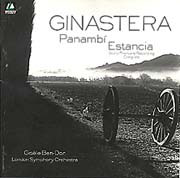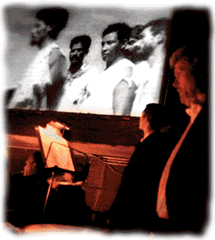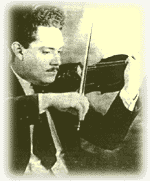Classical CD Review
By Len Mullenger
Another exuberant recording from Gisèle Ben-Dor (see Ginastera last month). Of the two works on this disc two are première recordings; La Coronela and Colorines.
Many hands have been at work on La Coronela (The Lady Colonel). This four-movement suite is taken from a ballet written for the choreographer Waldeen, inspired by a series of engravings by the Mexican José Guadalupe Posada, reproduced here from the CD booklet. This also contains excellent notes by Ken Smith on these little known compositions.
The ballet La Coronela was first performed in 1940. It depicts the rise of the working class and the overthrow of the Gentry. It also depicts, so clearly, that the peasant working class finds its amusement in taverns and in dancing as the ballet can often sound like a huge fun-filled, inebriate party. If we consider the Ballet Suite to be in four “acts” briefly separated from each other, the “scenes” within each act run continuously although the transition is often abrupt.
The opening movement is Los Privilegiados (Society Ladies of Those Times : The uppercrust of 1900) and this is in three episodes: Las Tres Damitas (The Three Young Ladies), La Levita y el Sorbete (The Israelite Charity Lady and the Gentleman), El Espejo (The Mirror). However, we are not given any details of the scenario to fill in the details. Revueltas is setting out his stall, depicting the carefree and uncaring life led by the decadent bourgeoisie. The music of this suite is like a chameleon, constantly changing shape, colour, metre — one minute a mexican rhythm, next an old fashioned waltz, with huge doses of Stravinsky thrown in and underpinned by a thwacking bass drum! It is played with tremendous gusto and enthusiasm by the Santa Barbara Symphony of whom Ms Ben-Dor is Music Director.
The Three Young Ladies stride in with a gruff rhythmic introduction heavy with bass and low brass. The trumpet is one of the key figure in La Coronela and now introduces itself with a short fanfare. A chirpy cor-anglais, oboe and bassoon take up a flouncing, tocking rhythm reminiscent of the opening to Peter and the Wolf, interrupted by a stabbing three-note motive on the trumpet followed by a comment from the bass drum (another major character in this piece). Violins introduce a slightly quicker pace until the trumpet takes up the theme and rhythm, driving it forward to a sudden doubling of the tempo – but only briefly. After four declamatory chords we are back to the original flouncing, tocking tempo, this time with the horns carrying the melody until, one again, the trumpet takes over.
We move straight into The Israelite Charity Lady and the Gentleman with a new bluesy phrase with jazz clarinet glissando. With a sudden acceleration we are in Rite of Spring territory: pounding strings and stabbing, chattering and slurring brass. Just as quickly we revert to the bluesy episode on woodwind and then hesitant strings lead to a new idea for The Mirror. This is full of portent with an insistent drum, slow strings and horns before all this is overthrown and we go racing away with the Peter and the Wolf episode again. All this in just five minutes!
The second movement shows the other side of the peso, a plaintive threnody for the dispossessed and the subjugated: Los Desheredados (The Disinherited), El Peón (The Labourer), Los Rurales (The Rural Resistance). We experience the repression of the disinherited with tuba over pounding piano and drum, long held notes on trombones and trumpet, piercing, piping, lamenting woodwind with a gradual fortissimo to cymbals and gong. This is like an episode from a Shostakovich symphony. The intensity grows with The Labourer. Strings have a short passage of agitation and despair, taken up by stabbing trumpet in Rite of Spring mode again. Finally gong and cymbal introduce The Rural Resistance. A hesitant pecking rhythm with Petrushka trumpet followed by return to the agitated strings, a brisk march idea and gradually the episode marches into the distance.
The third movement is Don Ferruco’s Nightmare (La Pesadilla de Don Ferruco): El Ambigú (The Party), El Peladito y la Gatita (The Scoundrel and the Simple Girl), La Burguesita (The Middle Class Lady), La Coronela (The eponymous Lady Colonel). The Party is a parody of a waltz with jangling piano. The rhythms are slurred; if you know La Valse by Ravel you will recognize the style. Then straight into a Mexican peasant dance for the Scoundrel and the Simple Girl. The Middle Class Lady wants none of that and has an elegant little dance for strings and woodwind with no brass or percussion. The Lady Colonel is introduced by a loud fanfare followed by a cocky rhythmic piano and full orchestra with the usual strident trumpet. She is upper class but likes to slum it so her dance alternates between elegance and local Mexican rhythm – driving without a break, into part IV.
This final movement depicts the Last judgment (El Juicio Final): La Lucha (The Battle), Los Caídos (The Fallen) and Los Liberados (The Liberated). There is violence in The Battle; trumpets and drums leading the charge to a glorious, celebratory passage of victory full of local mexican colour. Those fallen in battle are honoured with an 8 minute epicedium with mournful horns, the trumpet sounding the Last Post and a brief Danse Macabre from a solo violin. Following all the noise and colour that has gone before this is a most affecting passage. But the liberated peasants are in celebratory mood and the ballet suite ends with a swinging inebriated party on the original Lady Colonel theme.
Revueltas’s “alternative” life style led to his early death from bronchial pneumonia and he was working on the ballet when he died, so it remained unfinished. The score was completed through the collaboration of the composer Blas Galindo with the orchestration of Candelario Huízar. Thus, the first performance took place as scheduled, conducted by Eduardo Hernández Moncada. This completed score was then lost and had to be reconstructed by the conductor José Limantour with the orchestration completed by Moncada. For the reconstruction Limantour used two Revueltas film scores; ¡Vamanos con Pancho Villa¡ (1935) and Los de abajo (1939) but enlarging them on the basis that with a full symphony orchestra he did not need to suffer the same constraints that occur in a film score recording. So, the authenticity of the ending of the suite is subject to debate.
Itinerarios (Caminos) (Travel Diary) (1938) lasts just over 9 minutes and is a powerful and solemn lament. The strings are more prominent than hitherto but the trumpet is just as dominant. Dissolution and disillusionment abound. There is an important part for an introspective soprano saxophone. Ben-Dor says in her Gramophone interview with Michael Quinn (Jan 99) “He was an extraordinary, deeply feeling, loving, compassionate, caring human being and his music reflects that. It’s quite wild, and with so much charm, so much humour. But there is pain and tragedy too in the alcohol-dependent suicide’s music, not least in the heartbreaking saxophone solo of Itinerarios, a lament for Civil War-wracked Spain. The whole movement is disjointed, almost like Picasso’s Guernica, and then suddenly you have this perfect melody: sweet, symmetrical, organized, beautiful.”
For Colorines [7.18], the Santa Barbara Orchestra is replaced by the English Chamber Orchestra in a fuller acoustic (full personnel of both orchestras are listed in the booklet). This is an earlier work (1932) in a more neo-classical style but again making complex rhythm the most important element rather than thematic development. The influence of Petrushka is again much in evidence although there is plenty of time for pensive reflection as well as celebration.
Music of stunning vitality and highly recommended.


 Refusing to shy away from acknowledging the influences operating on Latin American composers early this century – ‘Of course Ginastera studied de Falla and Ravel and Bartok, but who didn’t at the time? Who wasn’t influenced by them?’ – Ben-Dor regards such references as wholly complementary. In Ginastera’s Op. 1 ballet, Panambi , ‘the language is so earthy, so sensuous, so Ravellian that it explodes with colour and rhythm’ while the later ‘boy-meets-girl story’, Estancia , she compares to Dvorak’s Slavonic Dances in its use of folk idioms, and finds there another, perhaps surprising echo. ‘The fugue in “Los puebleros” reminds you of Richard Strauss. It’s so witty, all those spikey, chattering rhythms make it sound like you’re listening to musical gossip.’
Refusing to shy away from acknowledging the influences operating on Latin American composers early this century – ‘Of course Ginastera studied de Falla and Ravel and Bartok, but who didn’t at the time? Who wasn’t influenced by them?’ – Ben-Dor regards such references as wholly complementary. In Ginastera’s Op. 1 ballet, Panambi , ‘the language is so earthy, so sensuous, so Ravellian that it explodes with colour and rhythm’ while the later ‘boy-meets-girl story’, Estancia , she compares to Dvorak’s Slavonic Dances in its use of folk idioms, and finds there another, perhaps surprising echo. ‘The fugue in “Los puebleros” reminds you of Richard Strauss. It’s so witty, all those spikey, chattering rhythms make it sound like you’re listening to musical gossip.’ “To head in the direction of downtown Santa Barbara for musical revelations about the 20th century is something new. But it is to Santa Barbara one goes these days to find out about some of the more astonishing aspects of Latin American music of the past century, thanks to the advocacy of the Santa Barbara Symphony’s Uruguayan music director, Gisèle Ben-Dor’. An enterprising conductor, she can be counted upon to unearth something important every season. But this year she has done much more, with a four-day Silvestre Revueltas Music Festival that ended Sunday.”
“To head in the direction of downtown Santa Barbara for musical revelations about the 20th century is something new. But it is to Santa Barbara one goes these days to find out about some of the more astonishing aspects of Latin American music of the past century, thanks to the advocacy of the Santa Barbara Symphony’s Uruguayan music director, Gisèle Ben-Dor’. An enterprising conductor, she can be counted upon to unearth something important every season. But this year she has done much more, with a four-day Silvestre Revueltas Music Festival that ended Sunday.” Revueltas was a romantic figure who could almost have been invented by Hollywood. A political radical and artist who was part of the same revolutionary culture as Diego Rivera, a fighter in the Republican struggle in Spain against Franco, a manic-depressive and alcoholic, and, as Steven Ledbetter wrote in his fascinating and detailed festival program notes, a “very difficult man to deal with on a social level,” Revueltas produced a blaze of important music in the last nine years of a short life (he died at 40). The “genius under the volcano who was ruined by alcohol” is the memorable phrase of Roberto Kolb-Neuhaus, a Revueltas authority who was on hand for the festival.
Revueltas was a romantic figure who could almost have been invented by Hollywood. A political radical and artist who was part of the same revolutionary culture as Diego Rivera, a fighter in the Republican struggle in Spain against Franco, a manic-depressive and alcoholic, and, as Steven Ledbetter wrote in his fascinating and detailed festival program notes, a “very difficult man to deal with on a social level,” Revueltas produced a blaze of important music in the last nine years of a short life (he died at 40). The “genius under the volcano who was ruined by alcohol” is the memorable phrase of Roberto Kolb-Neuhaus, a Revueltas authority who was on hand for the festival. For the festival, however, the complete score was restored and performed in accompaniment with a screening of the hour-long film as part of a wildly ambitious Santa Barbara Symphony afternoon program in the Arlington Theater. “Redes,” which has little dialogue, is a stark, haunting documentary-like depiction of the class struggle of Veracruz fishermen. It is a story told in strong images of sea and sky, of greed and suffering. The gripping music of tense sinew, angry but compassionate lyricism, ingratiating fold song undercut by harsh violence, is a crucial element, and its visceral sonic power makes this one of the most compelling experiments in restoring live music with cinema.
For the festival, however, the complete score was restored and performed in accompaniment with a screening of the hour-long film as part of a wildly ambitious Santa Barbara Symphony afternoon program in the Arlington Theater. “Redes,” which has little dialogue, is a stark, haunting documentary-like depiction of the class struggle of Veracruz fishermen. It is a story told in strong images of sea and sky, of greed and suffering. The gripping music of tense sinew, angry but compassionate lyricism, ingratiating fold song undercut by harsh violence, is a crucial element, and its visceral sonic power makes this one of the most compelling experiments in restoring live music with cinema.